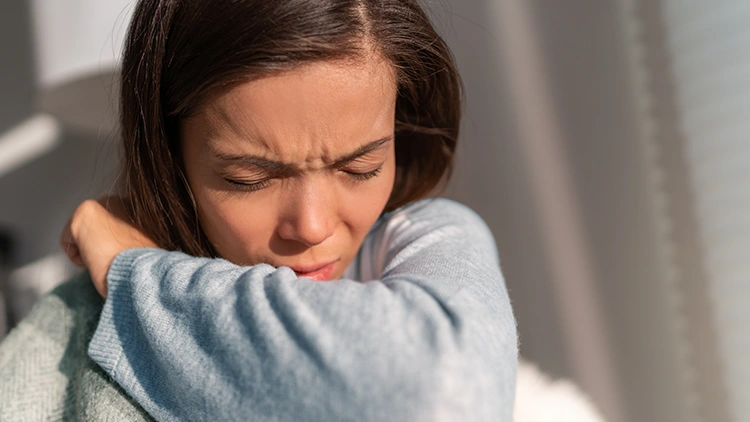Have you ever wondered what a sneeze is exactly? A sneeze is a sudden burst of air expelled from the lungs through the nose and mouth.
It’s the result of the inflammation of the trigeminal nerve in the nose. This nerve is linked to the “sneeze center” of the brainstem and sends signals that prompt a person to sneeze. It usually occurs when something like dust or pollen irritates the mucus membranes of the nose and throat. As a reflex, your body sneezes in order to get rid of whatever is causing the irritation.
The process of sneezing typically begins when your immune system releases chemicals such as histamine or leukotrienes due to the presence of allergens or to fight infections from foreign pathogens like the common cold and flu viruses.2 These chemicals bind to receptors on the trigeminal nerve and cause the “allergic reaction” symptom of sneezing.
